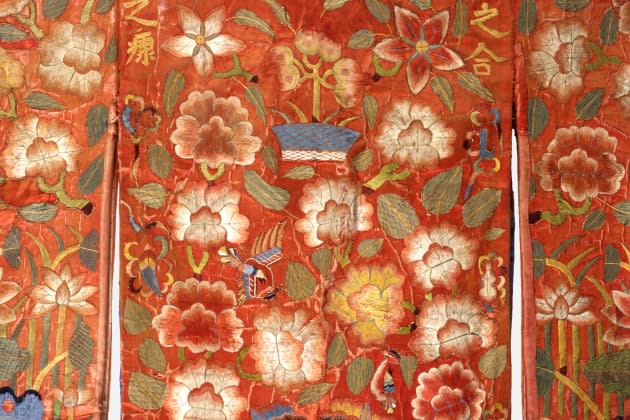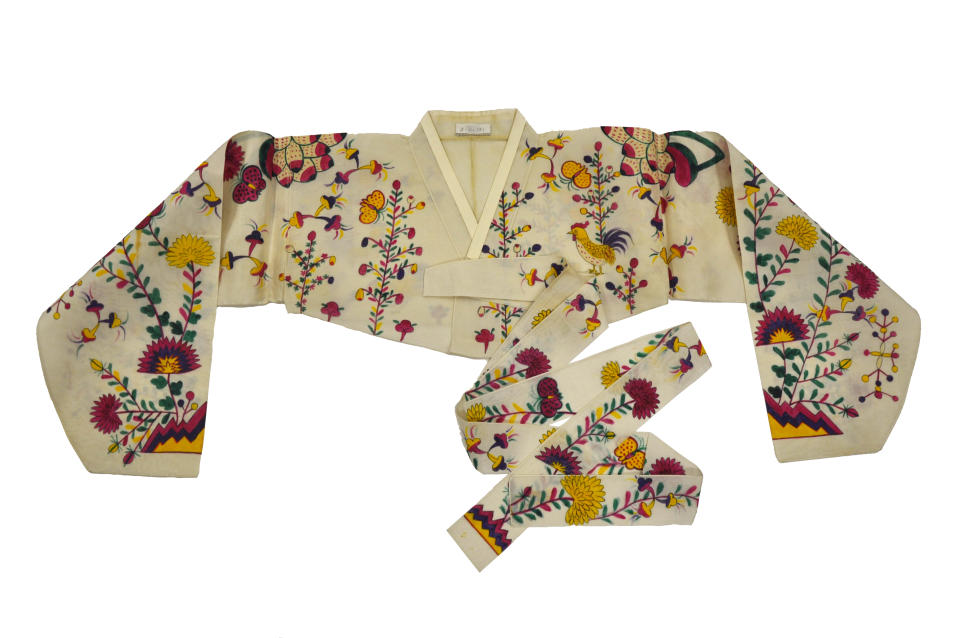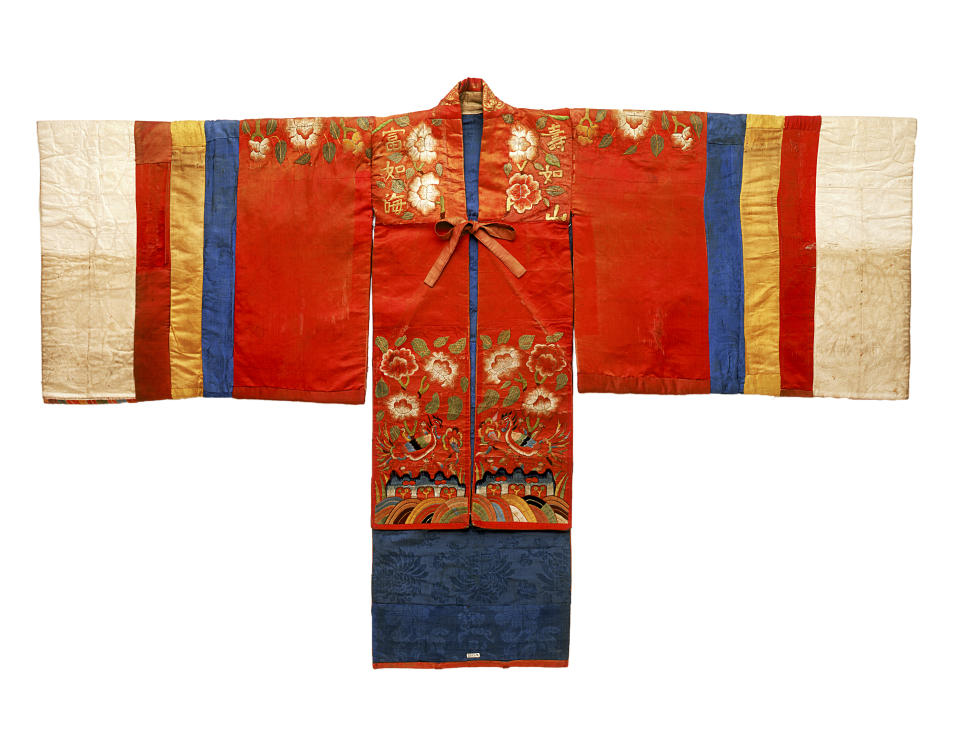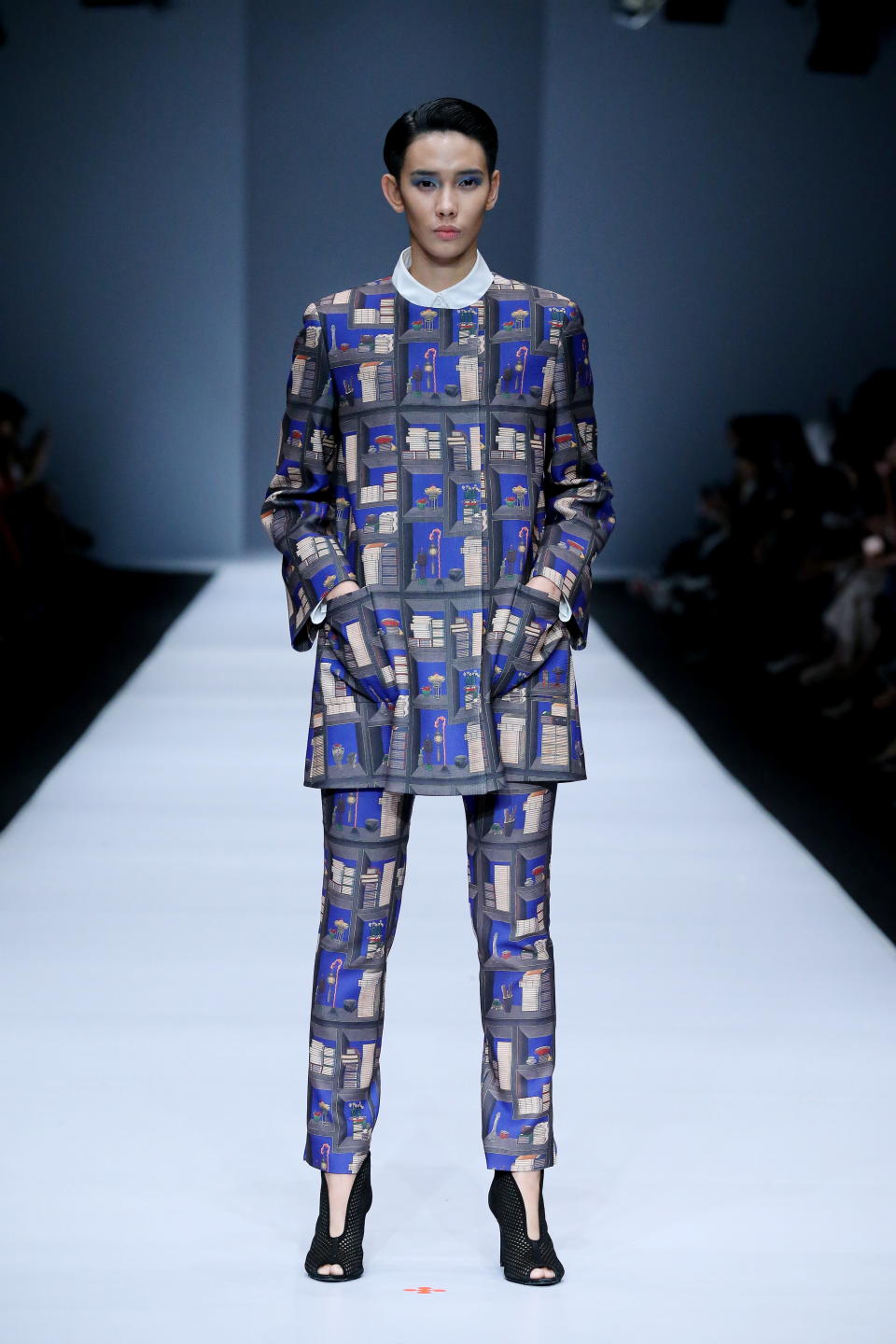New Exhibit ‘Korea Fashion: From Royal Court to Runway’ Takes Viewers Beyond K-Pop

K-pop may have centered South Korea in global pop culture in recent years, with its stars attracting legions of fans and becoming muses for some of luxury fashion’s leading labels, but the nation has had a long and rich history in fashion — regardless of whether the West was watching.
That’s what Lee Talbot, curator at the George Washington University Museum and The Textile Museum, wants the world to see with the “Korea Fashion: From Royal Court to Runway” exhibit open now through Dec. 22, 2022.
More from WWD
“I have found it really frustrating and almost laughable that so much writing about fashion and fashion history and fashion theory equates fashion with the West,” says Talbot, who has lived in Korea and studied its culture and customs for years. “And they say, well, fashion and the fashion system that we have today came about because of modernism in the West, because of the individualism that we have in the West, the special kind of market conditions that we have. But that is just not the case at all. So what we’re showing in this is exhibit, even hanbok, which we tend to translate as traditional Korean garments, was subject to fashion, it changed over time, there would be trends that would come and go. You see hemlines rise and fall, colors that come in and out of fashion.
“What I want to show with this exhibition is, it’s not that Korea went from traditional, unchanging and then all of a sudden with adopting Western fashion and Western modern lifestyles, all of a sudden fashion starts to appear,” he continues. “No. What I’m trying to say in this exhibition is that Koreans have always been fashionable. Always.”

Courtesy of The Textile Museum
The show marks the first time Korean textiles and fashion have been featured as the sole focus of a museum exhibition, at least outside of Korea, and the first time the Textile Museum has ever shown textiles from Korea, Talbot says.
The moment may be long overdue considering Korean fashion made its way to the American stage in 1893 via the World’s Columbian Exposition, or the world’s fair in Chicago that year. Articles from that fair 129 years ago will be on display at this exhibit.
“The exhibition is bookended in time and it starts with the objects that were sent to the Chicago World’s Fair and then it finishes with a screen that will be updated weekly showing just street fashions of Seoul,” Talbot says. “What I thought was really wonderful about these bookends is that both of them are Koreans presenting themselves through fashion to the world.”
In 1893, Korea was introducing itself to a global public in its first appearance at a world’s fair, and it chose to do so with fashion.
Two bridal robes or hwarrot on loan from Chicago’s Field Museum that will be part of the exhibit, are, according to Talbot, “almost like Holy Grail kind of material because they have this really interesting provenance. The king put together a commission at the royal court to choose the objects that would represent their country… it’s just fascinating as a group of objects that this is what the royal court chose.”
Bridal robes, which would have traditionally been reserved for the aristocracy but eventually became standard for all brides (which is still the case today, though the costly embroidery and craftsmanship leads many brides to rent them), speak to the stories traditional Korean clothing can tell about its wearer.
As Dr. Young Yang Chung, a Korean-born textile historian and embroiderer who consulted for the Korean Fashion exhibit, explains, “Clothing is not clothing. It all has meanings, and especially 100 years ago.”

Photo by John Weinstein
One of the two robes that will be on display is made of red, yellow and blue silk — a patchwork of various older garments crafted into a new one — and embroidered with symbols that would also have had meaning.
Describing one of the robes, Chung says, “It has a 1.5-foot-wide sleeve with three color bands and is constructed with 10 layers of padding [made of] of rice paper to make it stiffen….The color will determine age, gender, occasion and social status.”
Red and blue, she says, symbolize harmony and “this unique way of constructing, with fully embroidered…symbolic patterns of the bride and groom’s harmony is another thing.” Lotus and peony flowers, for example, represent wealth and dignity.
“This exhibition is so important for the public to understand the Korean color and concept and the symbolic meanings of patterns,” Chung says.
The exhibition travels through time and through Korea’s at-times troubled history, from Japan’s colonization of the country to the Korean War — factors Talbot and Chung agree could have been among the reasons the country was off the radar for something like fashion. It extends to more contemporary times, featuring pieces like a multicolored mid-’60s saekdong dress from designer Nora Noh and then brings things even further forward to a chaekgado jacket, tunic and pants by designer Lie Sang Bong shown in 2017.

Femina Group / Dachri Megantara
The link among the designers who are featured, according to Talbot, “is Korean tradition as a point of inspiration for new expressions,” or designers who have tapped into the past to create for the present.
“I think what [Lie Sang Bong is] doing is showing ways that Korean cultural heritage can be interpreted for the modern world. For example, some of the designers in previous generations that received some international success, such as Lee Young Hee, you look at her garments and for the most part you recognize them as Korean. If you recognize Korean garments, you can see the ancestry of hanbok in them. So it’s kind of a literal reimagination of hanbok or traditional Korean clothing,” Talbot says. Lie Sang Bong? Not so much. In fact, you don’t see the cut, the construction, the forms of hanbok, but you see elements of Korean culture coming out. For example, one of the outfits that we have has these very colorful patterns that were inspired by architectural paintings from the Joseon dynasty, so that’s an aspect of Korean culture that you don’t necessarily expect to see manifest in clothing. He is probably best known, certainly in Korea, for using Korean script, Hangul, as a decorative element and we’ll be emphasizing that in the show as well.”
The interest in bringing the old into the new in terms of clothing has ramped up in recent years, according to Yoo Jin Choi, a PhD student and curatorial intern at the Textile Museum who, as a native Korean speaker, provided research support and insight for the exhibition.
“In Korea, the interest in this modernized traditional clothing has been increasing quite a lot in the past five years, with a lot more amateur enthusiasts making their own clothing, a lot more online shops opening to be more accessible to Koreans in their twenties and thirties,” she says, which has encouraged many people to try their hand at what she called modern hanbok for everyday wear.
Even the government is in on it, having created school uniforms and uniforms for public officers inspired by traditional Korean garments, and these will be on display in a section of the exhibit.
Choi, too, wants the fashion-seeking public to see beyond what K-pop has brought to the table.
“Korean culture has been mostly defined as the very recent contemporary fashion, mostly worn by K-pop idols or some very few street [style] snaps because of such exposure to the K-pop culture,” she says. “And I just want to show that Korean culture existed way beyond these contemporary cultures that have been becoming more available in the past decade or so.”
Korea, according to Talbot, who began working on the current exhibit pre-pandemic when he saw what he calls an “explosion of cultural content coming out of Korea,” is one of the most fashion-forward nations in the world.
In a word, he’d owe it to “hybridity.”
“Koreans are really adept at combining lots of really different influences and creating something totally new. And that is not unique to contemporary fashion. It’s something that we see with historical material as well,” he says. “There would be influences coming in from China, for instance, and it would be very adroitly incorporated into Korean costume and Korean-ized and they would create a whole new look. So that’s something that we’ve seen over time but we certainly are seeing it now in contemporary fashions, which combine traditional elements of couture and elements of streetwear, [it’s] all of these things coming together in a really unique aesthetic.”
For those who may not make it to the museum, an international symposium titled “Hahn Moo-Sook Colloquium for Korean Humanities: Korean Fashion,” in conjunction with the exhibit, will take place on Nov. 5, both virtually and in-person at GW’s Elliott School of International Affairs.
Best of WWD

